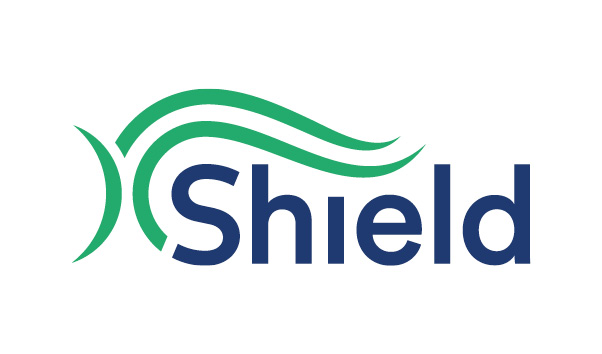Title Page
-
Project or Program Name
-
Conducted on
-
Full site details: Building name, floor, room and/or address
-
Permit Reviewed and Issued by
-
Contractor Details
Job Details
-
This Permit is only Valid when all sections are complete and should be read in conjunction with the risk assessments submitted for the work being conducted. If you are in doubt or don't understand, then please ask. Remember, all accidents, incidents, injuries and near misses are preventable. Please use this permit in the spirit intended to protect yourself and others. Please ensure that you sign this permit to work. DO NOT PROCEED WITH YOUR WORK UNTIL YOUR PERMIT HAS BEEN AUTHORISED BY THE SAFETY, RISK & ASSURANCE TEAM.
-
Is a completed Risk Assessment that meets the University requirements present and understood by workers?
-
What works will be undertaken?
-
What is the estimated height of the works being undertaken?
-
If the work exceeds 5 metres in height has WorkSafe been notified?
-
Is the WorkSafe notification or number available onsite for reference?
-
Special Tools / Equipment to be Used (full name or type of equipment, such as Elevated Work Platform)
-
Is any other work currently being undertaken that may interact or affect this permit, such as a Hot Works Permit or Working with Asbestos Permit?
-
Have the building occupants been consulted/advised of the work to ensure that there is no conflicting work?
-
Will there be any impact on pedestrian routes or emergency egress?
-
Is a Traffic Management Plan (TMP) required for this work or provided?
Working at Height Initial Hazards Assessment
-
Has the most appropriate equipment been chosen for work at height e.g. scaffolding, mobile scaffolding, elevated platform, ladder
-
If work is being conducted within 4m of overhead power lines is effective isolation in place (e.g. power disconnection, sleeving, or close approach consent).
-
Are all workers completing working at height appropriately qualified or trained to undertake this work?
-
Have Warning Signs been erected warning of Working at Height Taking place?
-
Has the Drop Zone been fenced or barricaded?
-
If the nature of the works could affect smoke detectors, heat detectors, sprinklers, infrared sensors or fire curtains has the appropriate Fire Protection System isolation request been completed and approved before work commences?
-
Has the weather forecast been checked?
-
Is there a robust Emergency Response or Rescue Plan for getting an injured or unwell worker down from working at height?
Types of Working at Height
Review of chosen working at height equipment
-
Roof Access
-
Is a safe means of access and egress to the roof provided?
-
Have Fragile Surfaces been Protected? (i.e. Poly Carbonate or Glass Skylights - Covered or Fenced off)
-
Is appropriate or effective Edge Protection in Place?
-
Are Fixed Lines or Engineered Anchor Points provided to secure workers using a Harness and Lanyard?
-
Have the Fixed Line or Engineered Anchor Points been Inspected and tagged as safe in the last 12 months?
-
Is the roof free of ice / frost?
-
Abseiling, Fall Restraint or Fall Arrest
-
Has the height safety equipment being used for this work been inspected in the last 6 months?
-
Is the Fall Arrest Lanyard the correct length? (i.e. 3 m shorter than the height of the structure)
-
Elevated Work Platform or EWP (Incl. Scissor Lift / Boom Lift but not limited to)
-
Do you hold a current EWP Licence or Qualification?
-
Has the EWP got a valid six monthly Inspection Certificate Plate displayed?
-
Have you checked the work area including access ways for fragile or uneven surfaces i.e. drain lids / manhole covers etc?
-
Have you checked the instruction manual or sought advice from the hireage company on safe wind speeds to operate this EWP?
-
Have you got a Harness and Fixed Lanyard for working in the bucket?
-
Have you checked for overhead hazards or obstructions to avoid injuries i.e. cables, pipes, hatches, vents?
-
Is there a Standby Person on the ground trained to use the lowering controls in the event of a breakdown?
-
Scaffolding (Fixed)
-
Has the scaffold been designed / erected and inspected by a competent person - and load rated for the works to be undertaken?
-
Is the scaffold tied or braced to the structure using approved methods?
-
Has the scaffold been fitted with a Scaff Tag Inspection System?
-
Has the Scaff Tag been completed in the last 7 days?
-
Is the Scaffolding protected from Vehicle Impacts at the base?
-
Are scrim or catch nets required on the scaffolding to stop items falling?
-
Are access ladders secured correctly / protected by self closing gates to prevent unauthorised access?
-
Is the scaffold protected at night, to prevent trespassers / unauthorised access?
-
Is scaffolding installed to standard (e.g. soleboards 500mm x 200mm x 38mm thick, base boards, platforms, toe boards, stabilising legs, stand offs, gates, ladder attachments, edge protection installed effectively)
-
Mobile Scaffold
-
Has the scaffold been erected and inspected by a competent person - and load rated for the works to be undertaken?
-
Is the work platform set up correctly (top rail 1100 mm high, mid rail 600 mm & toe boards 150 mm high)?
-
Have the wheels been leveled and locked?
-
Ladders Section
-
Is the ladder suitable for the Environment - i.e. Fibreglass Non- conductive ladder for electrical works?
-
Is the ladder / stepladder industrial rated and meets the trade or industrial standard with a rating of either 120 kg or 150 kg and complies with the AS/NZS 1892 standard?
-
Is the ladder / stepladder in good condition and with rating label in place?
-
Is the ladder / stepladder been used for works of Short Duration (Max 30 mins in the same location) and Light Works (Max 25 kg Tools / Equipment)
-
Is the ladder set up at 1:4 ratio (1m horizontal to 4m vertical)
-
Can users maintain 3 points of contact at all times
-
Is the ladder secured at top and base to prevent slipping sideways/out
-
Do all ladders have more than 3 steps
-
Power Supply Section
-
If power isolated is a lock out device in place with tag?
-
Are appropriate RCDs or safety devices in place?
-
Have power source or extension leads been tagged?
-
Are tags valid and leads in good working order?
-
Are leads used in a safe manner?
-
Tools & Machinery Section
-
Are all tools or materials secured while working at height?
-
Are the right tools or machinery being used for the job?
-
Are power tool tags valid?
-
Are all dangerous parts guarded?
-
Do all tools and machinery appear to be in good working order?
Authorisation & Acceptance
Supervisor or Manager in charge of these works
-
Company
-
Contact Name
-
Signature
Permit Issuer
-
Name
-
Signature
Permit start and expiry dates/times
-
Issued
-
Expires
General comments
-
Add media














